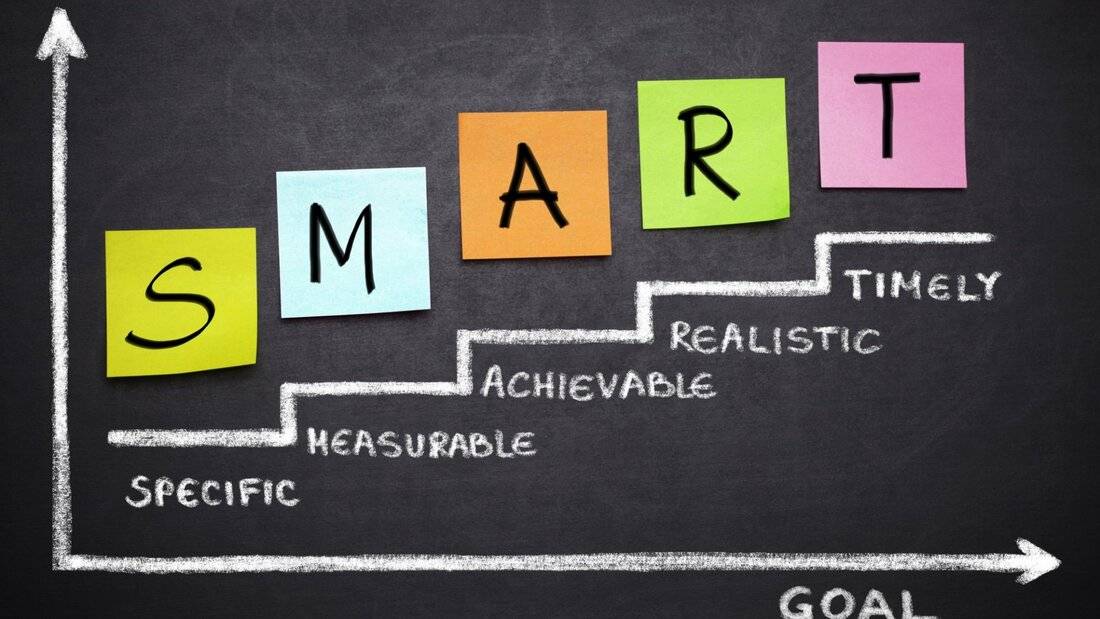Visualizing goals is an essential technique that can help individuals achieve success and obtain their desired outcomes. It involves creating a vivid mental image of what one wants to achieve and then using that mental picture as a motivation to take action towards achieving it.
The practice of goal visualization has been used by many successful people throughout history, from athletes and entrepreneurs to artists and writers.
Explanation of What Goal Visualization Is
Goal visualization is simply the process of creating a mental image of a desired outcome or goal. It involves using the power of imagination to create a clear and powerful picture in your mind of what you want to achieve.
This mental image must be detailed, specific, and realistic for it to be effective in motivating you towards achieving your goal.
Importance of Goal Visualization in Achieving Success
The importance of goal visualization cannot be overstated. By visualizing your goals regularly, you can train your mind to focus on what you want instead of what you don’t want.
This technique helps reduce anxiety and stress while increasing self-confidence, motivation, and enthusiasm for taking action towards achieving those goals.
One key reason why visualizing goals is so important is that it clarifies the focus on what one wants to achieve. When you have clear objectives, it’s easier for your mind to identify opportunities that align with those objectives- whether consciously or subconsciously – so that actions can be taken accordingly.
Brief Overview Of The Benefits Of Goal Visualization
Goal visualization offers numerous benefits for individuals seeking success in their personal or professional life. These benefits include an increase in confidence levels by building one’s sense if self-efficacy; better focus on tasks at hand; tackling challenges without trepidation; increased energy levels by setting clear objectives; developing optimism—visualising oneself making progress towards the end-goal keeps our spirits high during difficult times.
The practice of goal visualization can be applied in any area of life- from athletics to entrepreneurship to personal relationships. The technique offers incredible benefits and helps individuals reach their potential in a way that they might not have thought possible otherwise.
The Science Behind Goal Visualisation
Explanation of how the brain processes information
The human brain is a complex and fascinating organ that processes vast amounts of information every day. When we visualize our goals, we activate certain areas of our brain that are responsible for processing sensory information. These areas include the occipital lobe, which processes visual information, and the parietal lobe, which processes spatial and sensory information.
When we use visualization techniques to imagine ourselves achieving our goals, these same areas of the brain are activated as if we were actually experiencing the event. This creates new neural pathways in the brain that strengthen our ability to achieve those goals.
The role of imagination in goal visualisation
Imagination plays a crucial role in goal visualization because it allows us to create mental images of our desired outcomes. When we imagine ourselves achieving our goals, we activate the same neural pathways in the brain that would be activated if we were actually experiencing success.
By using vivid imagery and engaging all five senses (sight, sound, smell, taste, touch), we can make our visualizations even more powerful. The more detailed and realistic our mental images are, the more effective they will be in helping us achieve our goals.
The connection between thoughts and actions
Our thoughts have a direct impact on our actions. When we think about achieving a specific goal, it triggers a cascade of neural activity in the brain that influences how we behave.
By consistently imagining ourselves achieving success through visualization exercises, we can rewire our brains to adopt positive beliefs and attitudes towards achieving those goals.
This positive mindset can help us overcome obstacles and persist through setbacks because it strengthens our belief in ourselves and increases confidence in our ability to achieve what we set out to do.
This connection between thoughts and actions is an essential component of goal visualization because it highlights how our mental state can directly influence our behavior and ultimately lead to success.
Steps to Effective Goal Visualisation
Setting clear and specific goals
At the core of effective goal visualisation is setting clear and specific goals. Without a clear idea of what you want to achieve, it’s impossible to effectively visualise the outcome.
When setting your goals, it’s important to be as specific as possible. For example, instead of simply setting a goal to “lose weight,” try setting a goal to “lose 10 pounds in 3 months.” The more specific your goals are, the easier it will be for you to create a detailed mental image of your desired outcome.
Identifying short-term and long-term goals
In addition to being specific with your goals, it’s also important to identify both short-term and long-term goals. Short-term goals can help keep you motivated in the present moment, while long-term goals provide direction for your visualization practice over time.
For example, if your long-term goal is to run a marathon in six months’ time, you might set shorter term goals such as running three times per week or increasing your weekly mileage by 10%.
Creating a mental image of the desired outcome
The next step in effective goal visualisation is creating a detailed mental image of the desired outcome. This involves imagining yourself achieving your goal with all five senses.
What does it look like? How does it feel?
What sounds do you hear? By creating as detailed an image as possible in your mind’s eye, you’re giving yourself a powerful tool for motivation and focus.
Visualising the end result
One key aspect of creating this mental image is focusing on the end result – that is, what things will look like once you’ve achieved your goal. This might mean imagining yourself crossing the finish line at that marathon or stepping on stage after months of practicing a musical instrument.
The more vivid and detailed you can make this image, the more effective your visualisation practice will be.
Imagining yourself achieving your goals
Another key aspect of creating this mental image is imagining yourself achieving your goals. This means picturing yourself actually performing the actions that will lead to success – running that marathon, giving that presentation, or acing that exam. This helps you focus on the steps necessary for success and can provide motivation when things get tough.
Visualising the emotions associated with success
It’s important to visualise the emotions associated with success. How will it feel to achieve your goal?
Will you feel proud, accomplished, fulfilled? By focusing on these positive emotions and incorporating them into your visualization practice, you’re training yourself to associate success with positive feelings – making it more likely that you’ll stay motivated toward achieving your goals.
Practicing visualization techniques regularly
Creating a mental image of the desired outcome is just one part of effective goal visualisation. Equally important is practicing these techniques regularly. This might mean spending time each day in focused meditation or simply setting aside a few minutes each morning to mentally rehearse your goals for the day ahead.
Creating a daily routine for visualization
One effective way to ensure regular practice is by creating a daily routine for visualization. This might involve setting aside time each day specifically for this activity – perhaps first thing in the morning or just before bed. By building this into your daily schedule as a habit, you’ll ensure consistent progress toward achieving your goals.
Incorporating meditation into your practice
Another useful technique for developing consistency in goal visualisation is incorporating regular meditation into your practice. Meditation can help quiet distracting thoughts and focus attention on specific images or thoughts related to your goals.
By practicing meditation alongside visualisation, you may find it easier to stay motivated and focused on achieving your goals over time.
The Benefits Of Goal Visualisation
Improving Performance In Various Areas
Goal visualisation can significantly improve performance in various areas, such as athletics, career success, and personal growth and development. When you visualise achieving your goals, you are creating a blueprint in your mind that can help you work towards those goals more effectively.
Studies show that athletes who use goal visualisation techniques regularly perform better than those who don’t. Similarly, people who use this technique to improve their career or personal goals have reported significant improvements in their performance.
Athletic Performance
Athletes have been using goal visualisation techniques for decades to enhance their performance. Goal visualisation helps athletes imagine themselves achieving their desired outcome, including the emotional responses associated with winning or succeeding.
This process helps them build confidence and mental toughness, which is essential for success in sports. The power of positive thinking through goal visualisation can also help athletes overcome obstacles and setbacks during training or competition.
Career Success
Goal visualisation is not just limited to sports; it is also beneficial for achieving career success. When you create a mental image of your ideal job and work environment, it becomes easier to focus on the required steps needed to achieve that goal. Goal setting combined with visualisation improves motivation and commitment towards your career aspirations.
Personal Growth And Development
Goal visualisation can be used effectively for personal growth and development as well. By creating a clear mental picture of the desired outcome of a personal project or developing new habits, we are better able to envision ourselves reaching our desired destination.
This technique can be employed when seeking self-improvement in areas such as weight loss management or quitting smoking.
Reducing Stress And Anxiety
The power of positive thinking through goal visualization has been shown to reduce stress levels by enabling individuals to channel their thoughts towards their desired outcomes. Goal visualisation can help those who are anxious or stressed envision a better future and give them an incentive to work towards it.
The Power Of Positive Thinking
Goal visualisation is a way to promote optimism and positive thinking. When we focus on the end result, rather than dwelling on current obstacles or failures, we are more likely to remain motivated and on track towards our goals. The power of positive thinking through goal visualisation can help people improve their mood and increase resilience in the face of adversity.
Reducing Negative Self-Talk
Goal visualisation can also help reduce negative self-talk, which is often a barrier for people trying to achieve their goals. By picturing oneself succeeding in achieving the objective, one is less likely to focus on past failures as a predictor of future outcomes. This helps improve self-confidence and self-esteem, ultimately leading to higher levels of success.
Conclusion
Summary of Key Points Discussed: In conclusion, goal visualisation is a powerful technique that can help anyone achieve success in various areas of life.
By creating a clear mental image of the desired outcome, individuals can activate their brains’ creative powers and develop a stronger sense of motivation.
The effectiveness of goal visualisation is supported by scientific research, which suggests that the brain cannot distinguish between real and imagined experiences.
Therefore, visualising success can enhance performance in sports, career, or personal growth. Encouragement to Start Practicing Goal Visualisation Today: If you haven’t tried goal visualisation before, now is the time to start!
By following the steps outlined in this article and incorporating visualization techniques into your daily routine, you can harness the power of your imagination and unlock your full potential. Remember that achieving your goals requires not only hard work but also a positive mindset.
By focusing on what you want and imagining yourself already succeeding, you’ll be more likely to take action towards making your dreams a reality. An Optimistic Spin: It’s important to remember that success looks different for everyone.
Your goals may not match those of others or society’s expectations. However, through goal visualization, you can tap into what truly matters to you and create a roadmap for achieving it.
With dedication and persistence, anything is possible! So don’t be afraid to dream big and start taking steps towards turning those dreams into reality today.




























































